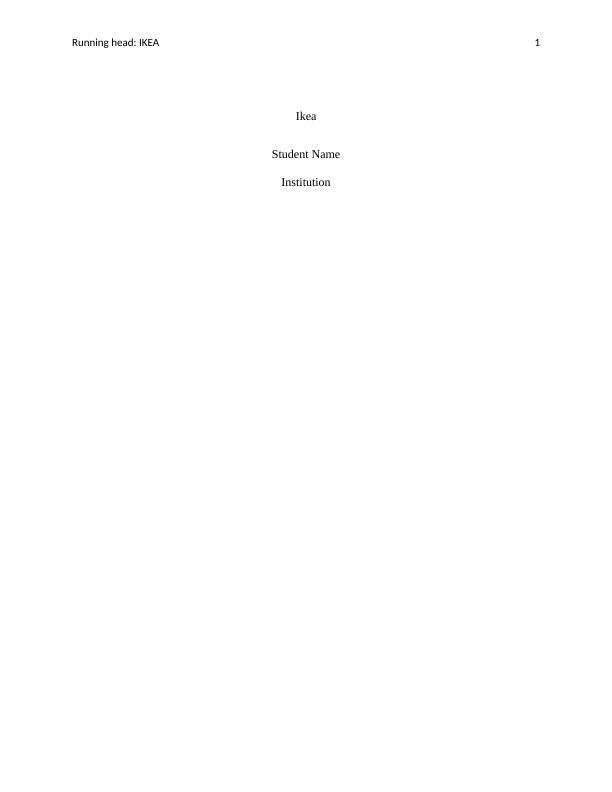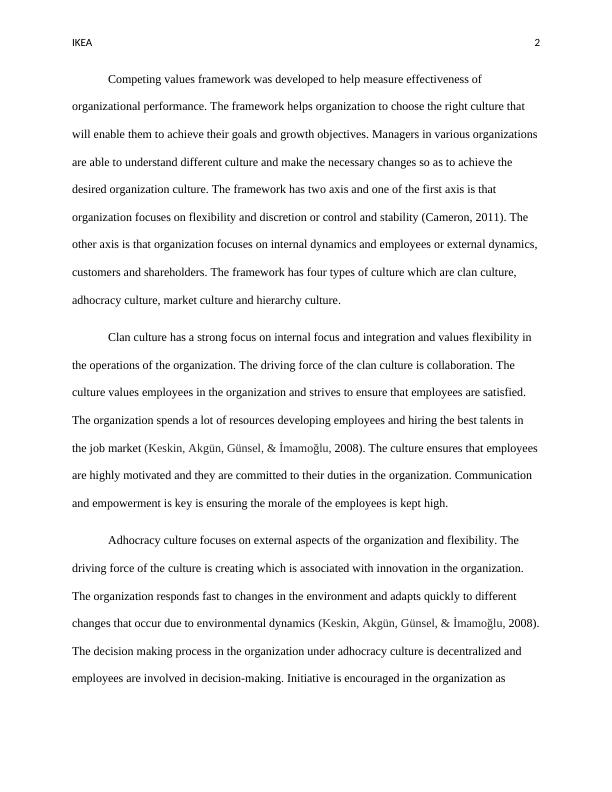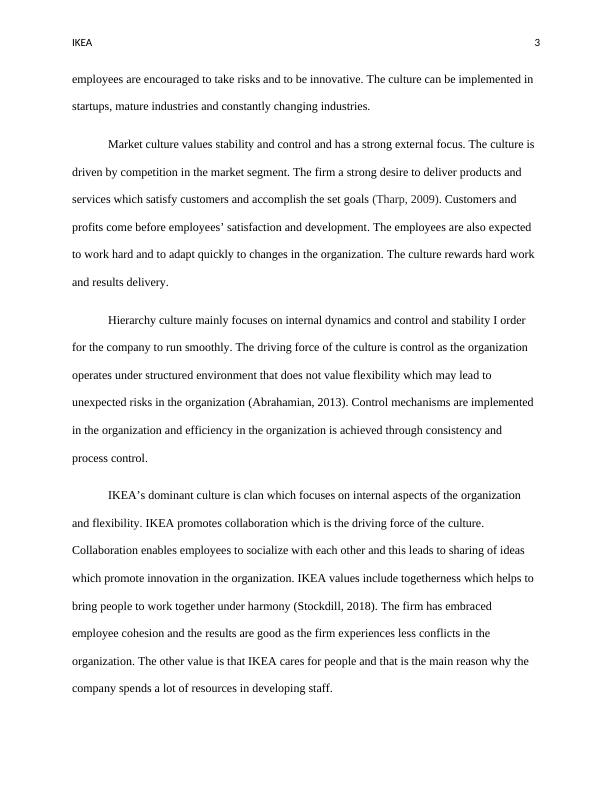IKEA: Understanding Competing Values Framework and Organizational Culture
Using the Competing Values Framework, identify the dominant culture of IKEA Southeast Asia and provide evidence to justify the determination.
6 Pages1060 Words463 Views
Added on 2023-06-03
About This Document
This article discusses the four types of organizational culture and how they apply to different firms. It focuses on IKEA's dominant clan culture, which values collaboration and employee development. The article also explains how organizations can choose the right culture to achieve their goals.
IKEA: Understanding Competing Values Framework and Organizational Culture
Using the Competing Values Framework, identify the dominant culture of IKEA Southeast Asia and provide evidence to justify the determination.
Added on 2023-06-03
ShareRelated Documents
End of preview
Want to access all the pages? Upload your documents or become a member.
Culture and Organizational Strategy
|7
|1544
|115
Organizational Behavior and Culture in Tesco
|12
|2863
|245
2. 2MANAGEMENT. : MANAGEMENT. Tourism and hospitality.
|3
|343
|83
Organizational Culture
|10
|2559
|81
Organizational Behavior: Relationship between Structure and Culture
|20
|936
|451
Study on People Leadership and Performance
|4
|631
|58



